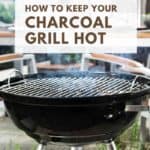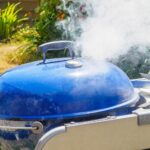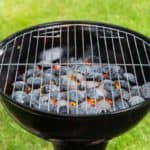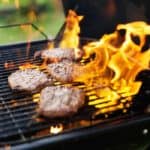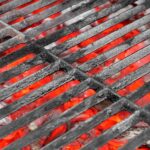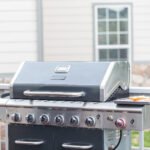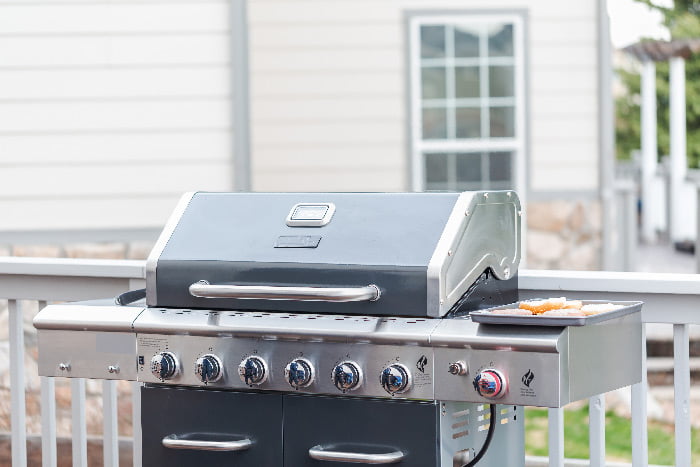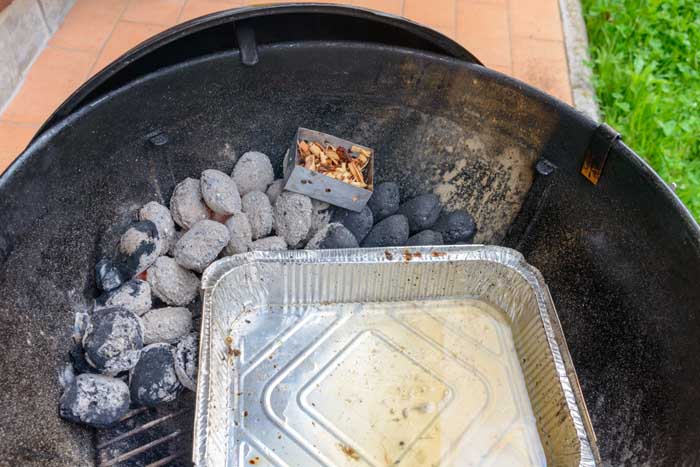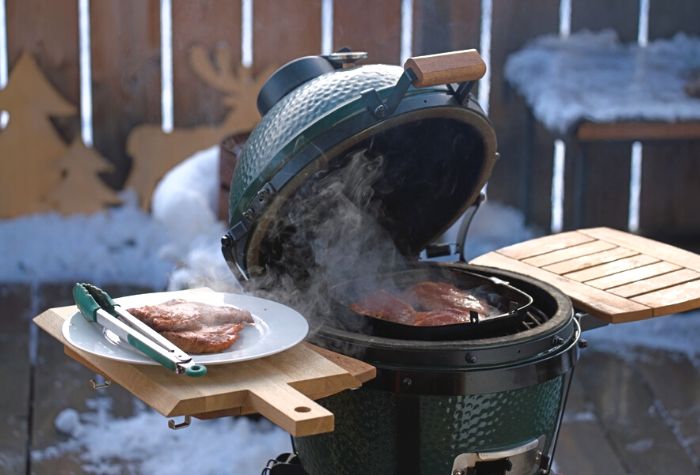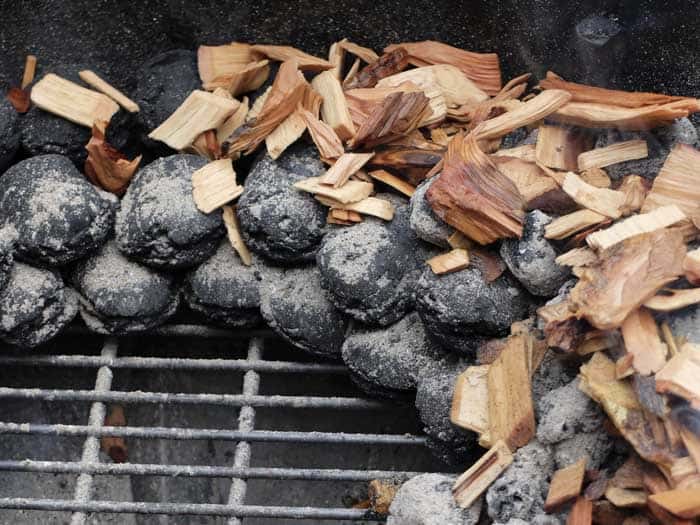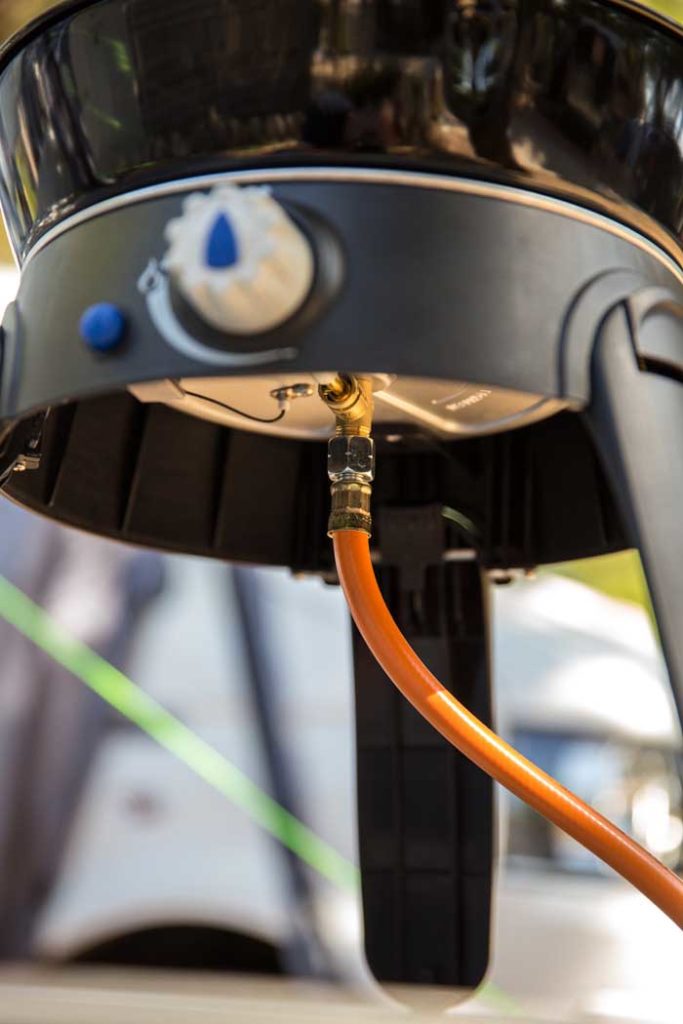Keeping the temperature of your charcoal grill consistent is one of the hardest skills when it comes to barbecue, but is absolutely the most important. Here are my 7 quick tips on how to keep your charcoal grill hot.
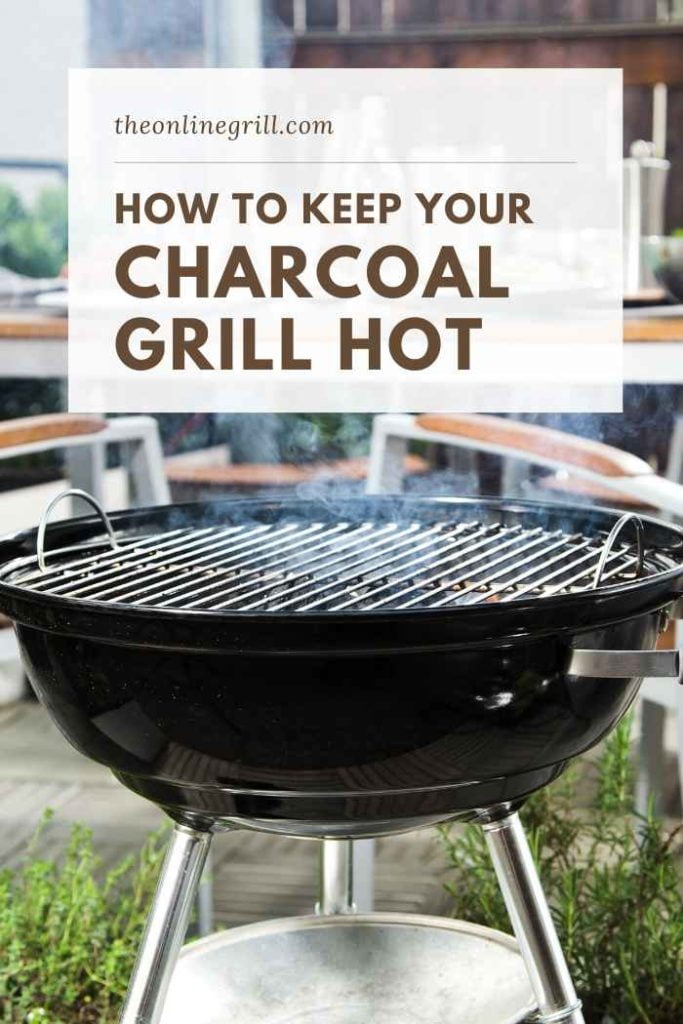
Charcoal grilling is one of the purest forms of outdoor cooking. Its smoky aromas and glowing warmth are what we all associate with good BBQ. However, charcoal is notoriously difficult to light, and even more difficult to control the temperature of.
Charcoal grill temperatures can fluctuate wildly, particularly if burning for hours. But to ensure that your meat is smoked to perfect tenderness it’s really important that we keep our temperatures steady. Fluctuations can lead to hot spots across your grill surface, while also ruining your meat.
Keeping your charcoal grill hot involves mastering air ventilation inside the grill chamber, while also making use of 2-zone cooking, constant ash disposal, and use of proper tools like air probe thermometers and chimney starters. It isn’t easy to start, but once you’ve mastered the core principles then you’ll be well on your way.
Here’s how to keep your charcoal grill going.
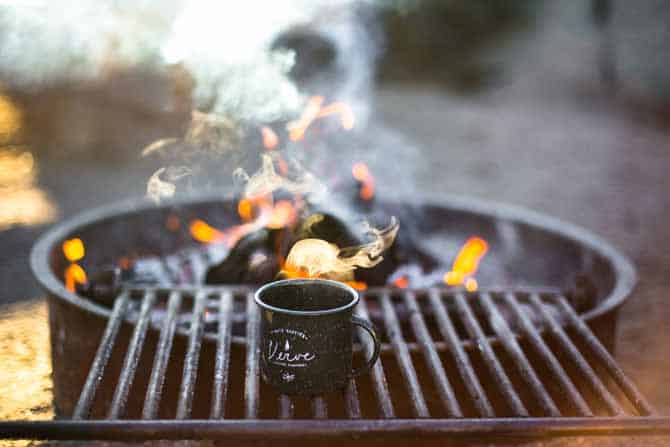
Get a Good Grill Thermometer
For grilling surface temperatures, you might see the number 225 thrown around a lot. That’s because a cooking temperature of 225°F is ideal for BBQ’d meat. While it can be tempting to get a flame going and attack your cuts of chicken, beef or pork with a sear, that 225 number is perfect for producing delicious, tender, juicy barbecued meat.
The difficulty however is that, unlike their gas counterparts, the majority of charcoal grills don’t come with a means of reading temperature. And for those that do, they’re notoriously inaccurate and unreliable. This can lead to overdone, dry meat. That’s no fun.
I recommend getting an air probe. These gadgets are probably the best type of grill thermometer, and they monitor the ambient temperature inside the grill accurately, which means that keeping to that 225°F number will be made more all the easier as you track the changes that added coals, fuel and ventilation make to your cooking environment.
I recommend the Lavatools Javelin (see prices on Amazon here). It’s not only accurate but really fast, helping you react to any temperature changes quickly.
When you get your air probe, make sure you set it up close to your food for the most accurate reading of the key areas of your grill.
If you would prefer to have a fixed analog model, then you can easily install a grill thermometer in your grill’s lid.
Use a Chimney Starter
There are a few ways you can light your lump wood charcoal pieces, but using a chimney starter (also called a charcoal chimney) is the best way. Not only is it one of the safest and reliable means of getting your BBQ going, but it also best ensures the even distribution of coals and therefore ongoing hot temperatures for the duration of your barbecue.
If you struggle with getting BBQs going, then learn how to light charcoal.
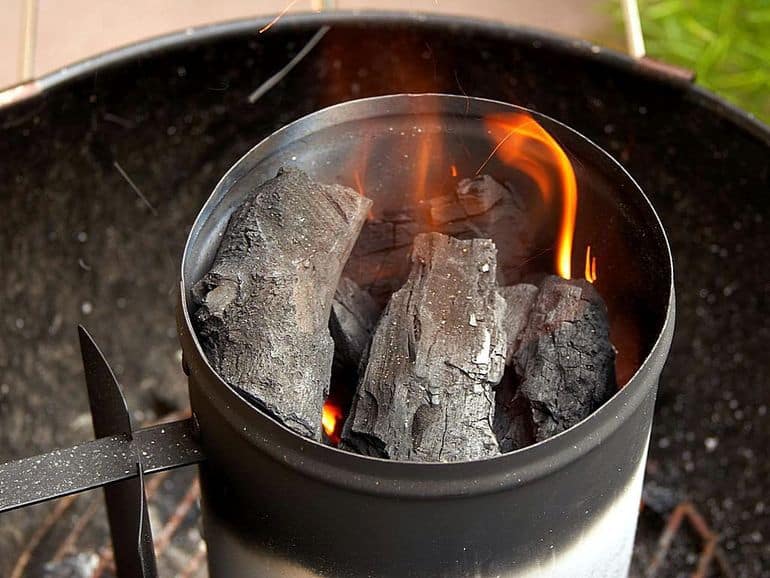
Chimney starters are a tall coffee mug-like vessel that you fill your charcoal into. The vessel works in three great ways: One is that it creates an excellent ventilated space for your coals to light in; second is that it is perfectly shaped to allow your heat to travel upwards as it lights the charcoal; and third is that it protects the coals from the elements, allowing them to ignite undisturbed.
If you don’t have a chimney starter already, then I recommend the WolfWise Fire Starter (see prices on Amazon here). It’s a lightweight starter that makes it easy to transfer your coals once you’ve gotten them going. You can check out my guide to the best charcoal chimneys here.
Open the Dampers
As important as having a healthy supply of charcoal or wood chips is in keeping your good grilling temps, oxygen plays just as an essential role.
Your grill uses two main fuels: Charcoal and oxygen. So making sure that you have a good amount of air flowing into the chamber is key.
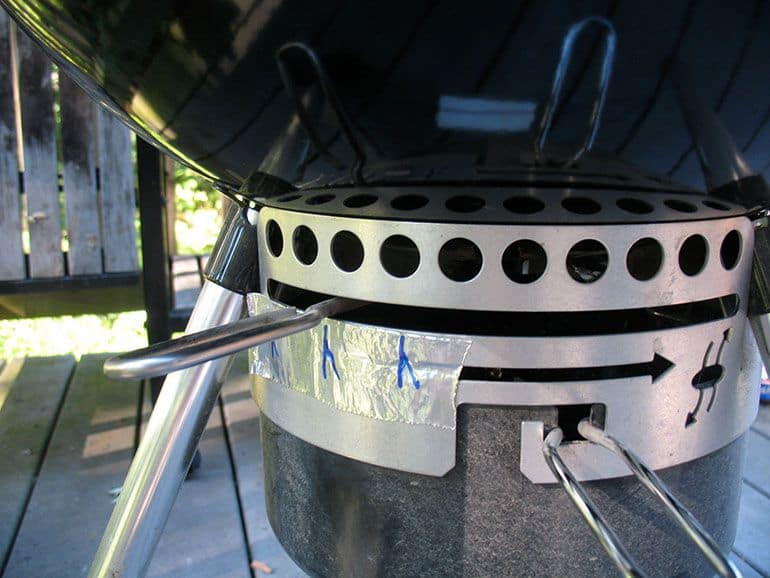
Before starting, locate your grill’s dampers. There should be two. One is the intake damper, which is often found towards the base of your grill, near where your charcoal sits. The other is an exhaust damper, which is usually located in the lid.
The two of these work in conjunction to have a healthy air supply flowing in through the intake damper, and out through the exhaust damper. If either one of these is shut then you’re depriving your lit charcoals of good air supply.
Open both dampers before you ignite your grill. As the heat rises, you can adjust these later as you need.
Create 2-Zones
Those of you familiar with indirect grilling will know the importance of setting up a 2 zones (and for those of you who aren’t, take a look at my guide to indirect grilling). The key to proper temperature control lies in being able to create 2 working zones.
Charcoal grills need 2 zones set up within them to create the more moderate temperatures that good true BBQ needs. If you really get to grips with this technique, then you can even use your grill as a smoker.
The good news is that this is really easy to do.
After lighting your coals in the chimney starter, place them on one side of your grill only. Once these are in place, put your grates back in. When you put your food on the BBQ, you place it on the opposite side to the burning coals. With the grill covered this will create a low but even temperature for your food to cook in.
Keep an Eye on Your Fuel
Depending on what you’re cooking, grilling or smoking can take a few hours. If this is the case then it’s likely that the charcoal will start to burn down, leading the surface temperature to drop below 225°F.
No problem though. We can restore our fuel supply in a couple of ways.
One is to get your chimney starter out again and light a dozen charcoal pieces, before then adding them to your grill.
The other is to just add the new coals directly to your BBQ over the already lit coals. Obviously, this is a lot easier, however, coals emit a lot of smoke when they ignite and built up their temperature, which can significantly destabilize the temperature in the cooking area. To combat this you can try to limit the intake damper, but you might find that using the chimney starter is a better option.
Adjust the Ventilation
Although we have set both our dampers to open, there will need to be adjustments at times as the heat from the charcoal inevitably deviates from 225°F.
When this happens, it might be tempting to toy with both dampers to try to correct the temperature. Don’t do this though. Instead, leave the exhaust damper open at all times and only adjust the intake damper.
Use your air probe to check the grill’s air temperature about every 5 minutes. If the heat is too low then open up the intake damper slightly. Too high and close it a bit. Pretty soon you’ll find a sweet spot that gets you in line with our 225°F target.
Remove the Ashes
As your charcoal burns it’ll create a lot of ash, which then collects at the bottom of your grill. This in turn can smother the lit coals, slowly extinguishing them and preventing proper airflow.
If your grill has easy ash disposal (a lot of the better charcoal grills have one), then be sure to use it every 30-60 minutes throughout cooking. If it doesn’t then you might need to do this manually with a scoop. Just be careful to not to do it so much that you disrupt your cooking temperature levels.
